
Some Amount Of Vaginal Discharge Is Normal
A healthy vagina produces 3-4 ml of discharge every day. It is nothing but the mucus secreted by the glands present in the vagina and cervix. It is meant for lubrication of the vagina. It also contains debris comprising of dead vaginal cells and bacteria and serves as a means by which the vagina self- cleans itself. The normal vaginal discharge is milky white in color and is slightly acidic in nature. The acidic medium helps in warding off bacterial infection. You may observe some changes in the color and consistency of the discharge depending upon the phases of menstrual cycle, pregnancy, emotional stress, and use of certain medications.
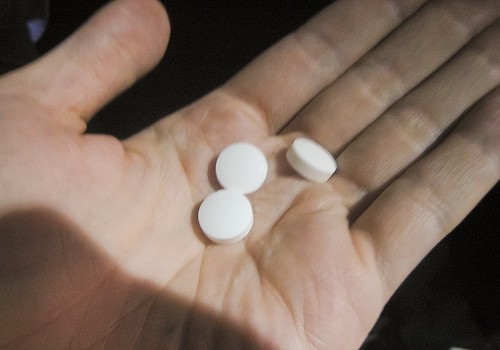
Other Causes Of Abnormal Vaginal Discharge
Apart from the normal changes in the vaginal discharge associated with the menstrual cycle and the changes associated with sexually transmitted diseases, there are many other conditions that can lead to an abnormal vaginal discharge. Some of these conditions have been enlisted below: • Use of antibiotics or steroids: These medicines effect the balance of normal flora present in the vagina. Any drastic change in the number of Lactobacillus sp. can lead to opportunistic infection by other microorganisms. These infections may lead to abnormal vaginal discharge. • Birth control pills and hormone replacement therapy: These medications upsurp the hormonal balance of the vagina, giving rise to infections • Diseases like diabetes and HIV: They again pave way for opportunistic infections. • Pregnancy: The hormonal disturbances may lead to abnormal vaginal discharge • Vaginal atrophy: Post menopausal vaginal atrophy can lead to drying out of the vagina, leading to infections • Use of douches, scented soaps, etc can also lead to infections.
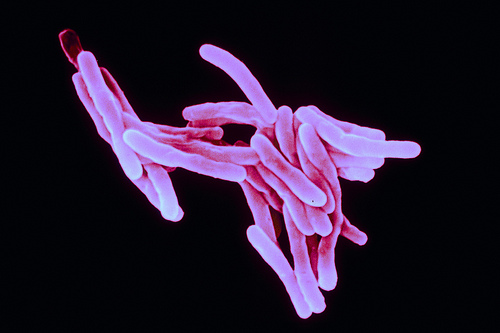
Vaginal Discharge Associated With Bacterial Vaginosis
Bacterial vaginosis is a bacterial infection of the vagina wherein, the normal Lactobacillus sp. is replaced by anaerobic bacteria. The disease can be contracted by having multiple sexual partners, a new sex partner, douching, or lack of vaginal lactobacilli as a result of use of antibiotics, etc. The vaginal discharge is usually white to grey in color although in some women it may be watery or even yellow. The discharge is characterized by its pungent fishy odor which is more marked immediately after sexual intercourse. Two other symptoms commonly associated with bacterial vaginosis are redness and intense itching of the vaginal area. The disease is usually relieved with a course of antibiotics.
- Important notification about information and brand names used in this slideshow!
- Photo courtesy of Sanofi Pasteur by Flickr : www.flickr.com/photos/sanofi-pasteur/5280405700/in/photostream/
- www.mckinley.illinois.edu/handouts/vaginal_discharge.html
- http://www.cdc.gov/std/treatment/2010/vaginal-discharge.htm
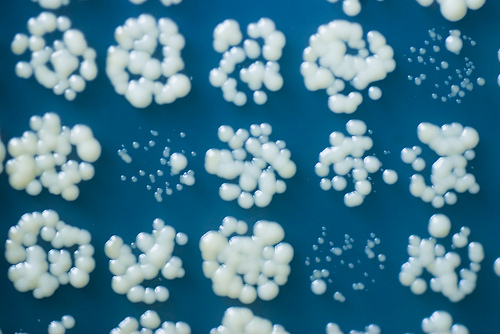
Vaginal Discharge Associated With Yeast Infection
Yeast infection of vagina, also known as vulvovaginal candidiasis is causes by a fungus called as candida albicans. It is commonly present in small numbers inside the vagina. However, conditions that upset the normal flora of the vagina, like use of antibiotics and conditions like pregnancy, hormone replacement therapy and diabetes, can result in overgrowth of these fungi resulting in infection. The vaginal discharge associated with candidiasis is thick, cheesy white and flaky. It may be odorless or characterized by a strong odor of yeasty beer or bread. The condition is usually treated with the help of antifungal tablets or creams for topical application.
- Important notification about information and brand names used in this slideshow!
- Photo courtesy of Conor Lawless by Flickr : www.flickr.com/photos/conchur/5658435523/
- www.mckinley.illinois.edu/handouts/vaginal_discharge.html
- http://women.webmd.com/tc/vaginal-yeast-infections-topic-overview

Changes In Vaginal Discharge That May Be Associated With STDs
Although certain sexually transmitted diseases, like chlamydia and gonorrhea may be completely asymptomatic at times, changes in the color and odor of vaginal discharge should alert you to the possibility of some STD. The typical changes in the vaginal discharge associated with some STDs have been enlisted below: • Trichomoniasis: Frothy, yellow to greenish vaginal discharge with an offensive odor. • Yeast infections: The vaginal discharge seen in yeast infection is thck, clumpy white often resembling ricotta cheese. However, it may vary from thin, watery to yellowish in color. The vaginal discharge has a typical yeasty beer or bread odor. • Bacterial vaginosis: Although it is not strictly a STD, it can be contracted during sexual intercourse. The vaginal discharge is white, grey or yellow in color with a typical fishy odor, which is more marked after having sex. • Chlamydia: Some amount of odorless vaginal discharge may be present. • Gonorrhea: Yellowish or cloudy, odorless vaginal discharge may be present but it is difficult to diagnose the STD on the basis of vaginal discharge alone.
- Important notification about information and brand names used in this slideshow!
- Photo courtesy of Mike Mantin by Flickr : www.flickr.com/photos/mikemike/56638613/
- en.wikipedia.org/wiki/Vaginal_discharge
- http://www.cdc.gov/std/treatment/2010/vaginal-discharge.htm

Changes In The Vaginal Discharge During The Different Phases Of Menstrual Cycle
The color and consistency of the vaginal discharge varies during the different phases of the menstrual cycle depending upon the rise and fall of estrogen and progesterone. • Immediately following the menstrual period, there is no vaginal discharge for a few days. The mucus is very thick and forms a plug at the mouth of the cervical canal. These days are also called as the dry days. • The vaginal discharge is milky white in color and sticky in consistency during the days immediately before and after the ovulation. If a woman has a 28 days cycle, these days correspond to days 7-11 and 17-26 of her menstrual cycle. • The vaginal discharge resembles raw egg whites on days 12 to 16. These days correspond to the ovulatory phase of the menstrual cycle. • The discharge becomes watery in days immediately preceding the menstrual periods. However, compared to days of ovulation, the consistency of the discharge is thick. • Sometimes, a brownish discharge is seen following the periods. It is because of the cleaning up of the blood from the cervical canal.
- Important notification about information and brand names used in this slideshow!
- Photo courtesy of skypek by Flickr : media.photobucket.com/user/skypek/media/People/woman-menstruation-400.jpg.html?filters[term]=menstruation&filters[primary]=images&sort=1&o=70
- www.mckinley.illinois.edu/handouts/vaginal_discharge.html
- http://www.cycleharmony.com/menstrual-tracking/what-does-your-vagina-discharge-tell-you

Vaginal Discharge Associated With Diabetes
The high blood sugar in diabetics may result in high glucose content in the vaginal discharge. This extra glucose is utilized by the yeast cells which are normally present in the cervical canal. Because of the presence of extra food in the form of glucose, these yeast cells multiply rapidly giving rise to yeast infection of the vagina. The vaginal discharge produced in case of yeast infection is thick and cheesy associated with a yeasty smell. Therefore, it is imperative for diabetes patients to keep their glucose level under check with the help of suitable medications or insulin, and regular exercise. They should also take care to maintain a proper vaginal hygiene. Avoid wearing tight-fitting clothes which trap moisture.
- Important notification about information and brand names used in this slideshow!
- Photo courtesy of bodytel by Flickr : www.flickr.com/photos/bodytel/5476226072/
- www.rightdiagnosis.com/symptoms/cheesy_vaginal_discharge/diabetes.htm
- http://www.intelihealth.com/IH/ihtIH/WSIHW000/9339/10955.html
- http://www.type2diabetesguide.com/vaginal-yeast-infection-and-diabetes.shtml
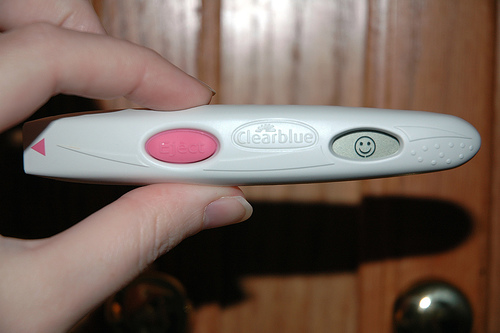
Vaginal Discharge During Ovulation
The vaginal discharge at the time of ovulation is copious, slippery in consistency and resembles raw egg whites. The watery fluid like consistency facilitates the sperm to reach all the way to the egg. It coincided with the release of the egg from the gestational sac. The mucus produced at this time of the menstrual cycle is also called as the fertile mucus because the chances of a woman getting pregnant are the maximum during this time. For women trying to get pregnant, clear mucus indicates the time of ovulation, which is the best time to conceive. Similarly, women who do not wish to get pregnant can get a clue about when to be extra vigilant to avoid unwanted pregnancy. Some women may observe a light brownish vaginal discharge during the time of ovulation.
- Important notification about information and brand names used in this slideshow!
- Photo courtesy of George Farmer by Flickr : www.flickr.com/photos/glorifytwism/762122692/
- voices.yahoo.com/how-determine-ovulation-vaginal-discharge-8166191.html
- http://www.pinkdischarge.net/discharge-during-ovulation/




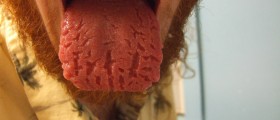





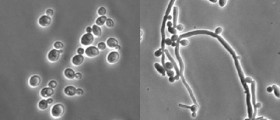


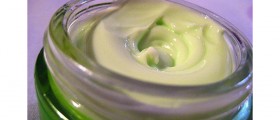



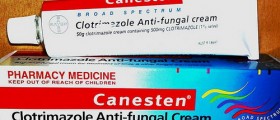


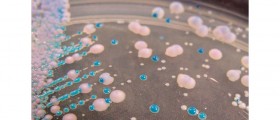
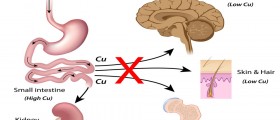



Your thoughts on this
Loading...